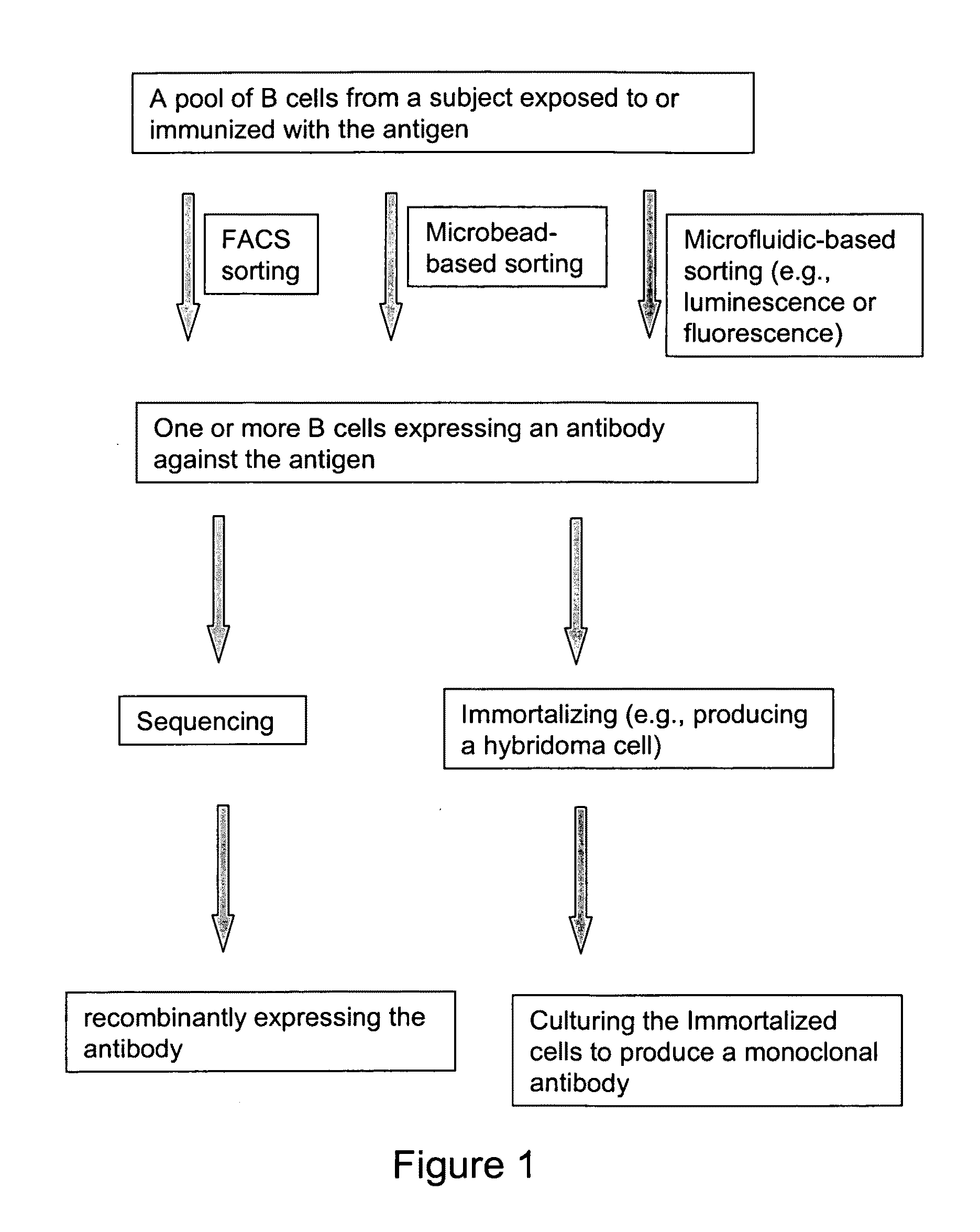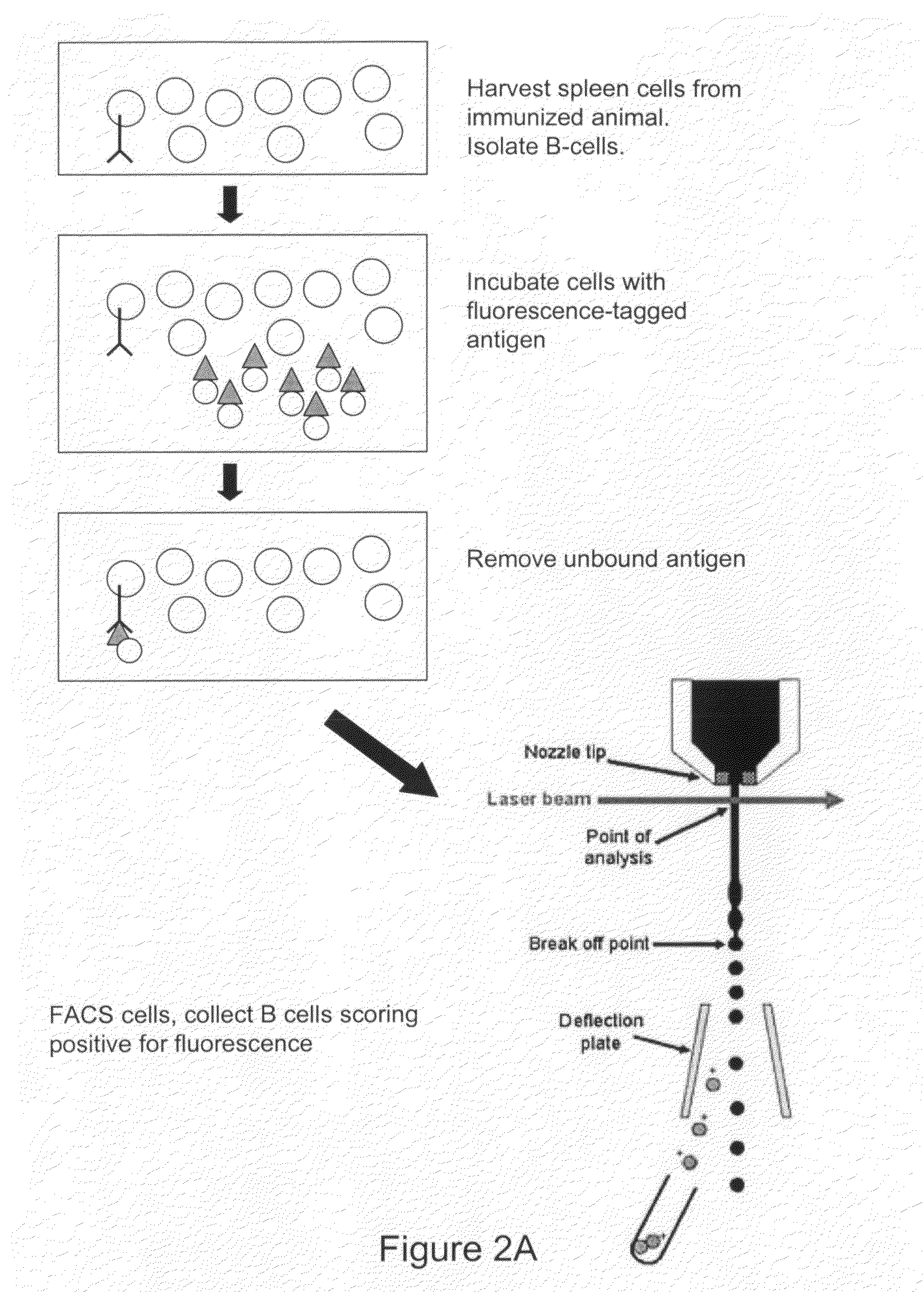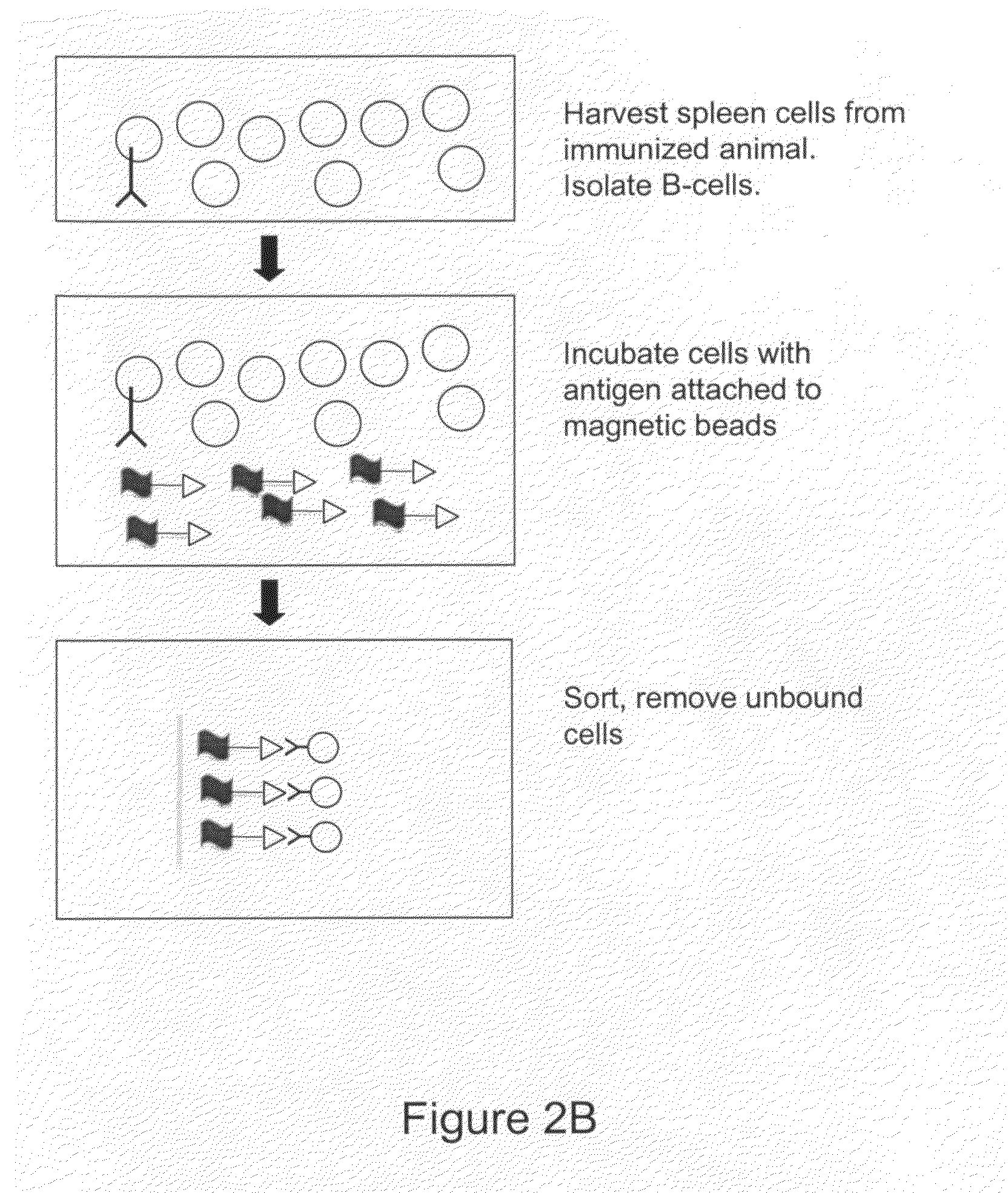Devices and methods for immunoglobulin production
a technology of immunoglobulin and production method, applied in the field of immunoglobulin production device and method, can solve the problems of 50,000- to 100,000-fold inefficiency inherently inefficient and laborious approach, etc., and achieve the effect of improving the efficiency of monoclonal antibody production
- Summary
- Abstract
- Description
- Claims
- Application Information
AI Technical Summary
Benefits of technology
Problems solved by technology
Method used
Image
Examples
example 1
Detection of Cell Surface IgG on Antigen-Specific Cells
[0181]To detect cell surface IgG on antigen-specific B cells, we compared the expression of cell surface IgG on non-secreting “NSO” myeloma cells with that of hybridomas, which secret monoclonal antibodies against Ephrin B1 (cell lines 76A6 (“clone 1”) and 9C3 (“clone 2”)). These three cell lines were grown in DMEM supplemented with 10% fetal bovine serum and then washed three times with phosphate-buffered saline. Cells were then exposed to Alexa 488-conjugated goat anti-mouse IgG (Molecular Probes, Inc.), washed again with PBS, and analyzed by FACS (FIG. 7A). Significantly, the NSO cells, which secreted no detectable IgG, showed very low signals, with a mean of approximately 60 arbitrary units, in the “GFP” channel used to detect Alexa 488. In contrast, clones 76A6 and 9C3 showed surface IgG values of 800 and 400, respectively (FIG. 7A).
[0182]To determine whether these same hybridomas could be detected by direct binding of anti...
PUM
| Property | Measurement | Unit |
|---|---|---|
| diameters | aaaaa | aaaaa |
| diameter | aaaaa | aaaaa |
| diameter | aaaaa | aaaaa |
Abstract
Description
Claims
Application Information
 Login to View More
Login to View More - R&D
- Intellectual Property
- Life Sciences
- Materials
- Tech Scout
- Unparalleled Data Quality
- Higher Quality Content
- 60% Fewer Hallucinations
Browse by: Latest US Patents, China's latest patents, Technical Efficacy Thesaurus, Application Domain, Technology Topic, Popular Technical Reports.
© 2025 PatSnap. All rights reserved.Legal|Privacy policy|Modern Slavery Act Transparency Statement|Sitemap|About US| Contact US: help@patsnap.com



